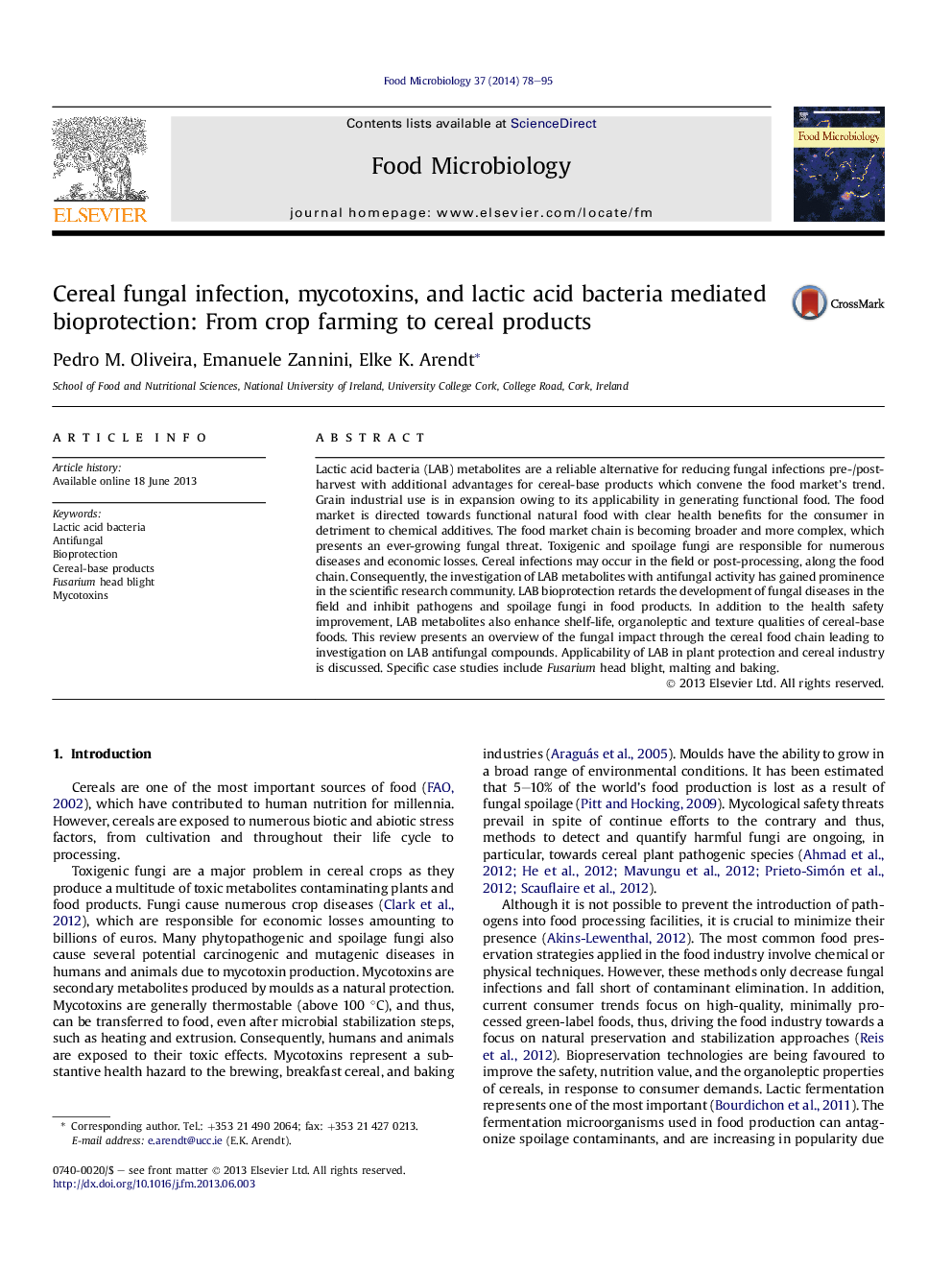| Article ID | Journal | Published Year | Pages | File Type |
|---|---|---|---|---|
| 4362961 | Food Microbiology | 2014 | 18 Pages |
•Fungal infections cause quality and quantity losses in the food cereal chain.•Cereal crop diseases lack effective prevention strategies and cost €billions.•Antifungal lactic acid bacteria is a suitable hurdle antifungal technology.•LAB bioprotection can be applied effectively pre-/post-harvest and post-processing.•Antifungal LAB provides product safety, nutritional, and organoleptic advantages.
Lactic acid bacteria (LAB) metabolites are a reliable alternative for reducing fungal infections pre-/post-harvest with additional advantages for cereal-base products which convene the food market's trend. Grain industrial use is in expansion owing to its applicability in generating functional food. The food market is directed towards functional natural food with clear health benefits for the consumer in detriment to chemical additives. The food market chain is becoming broader and more complex, which presents an ever-growing fungal threat. Toxigenic and spoilage fungi are responsible for numerous diseases and economic losses. Cereal infections may occur in the field or post-processing, along the food chain. Consequently, the investigation of LAB metabolites with antifungal activity has gained prominence in the scientific research community. LAB bioprotection retards the development of fungal diseases in the field and inhibit pathogens and spoilage fungi in food products. In addition to the health safety improvement, LAB metabolites also enhance shelf-life, organoleptic and texture qualities of cereal-base foods. This review presents an overview of the fungal impact through the cereal food chain leading to investigation on LAB antifungal compounds. Applicability of LAB in plant protection and cereal industry is discussed. Specific case studies include Fusarium head blight, malting and baking.
